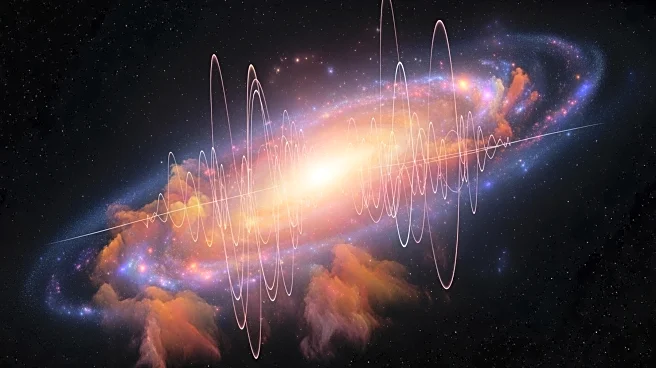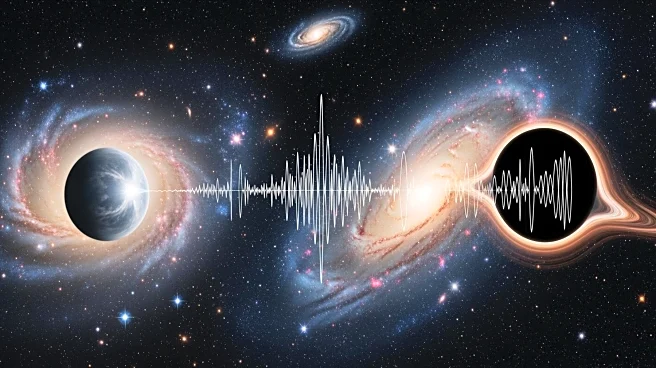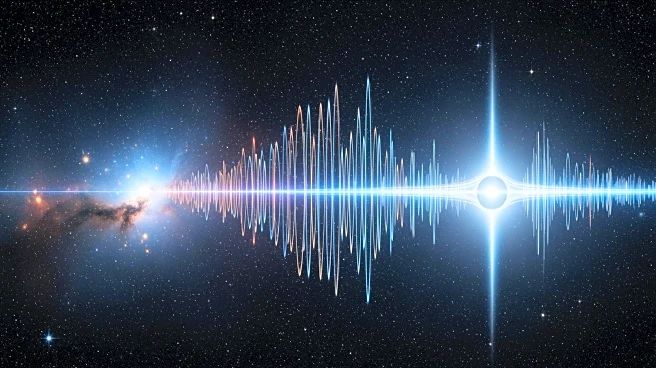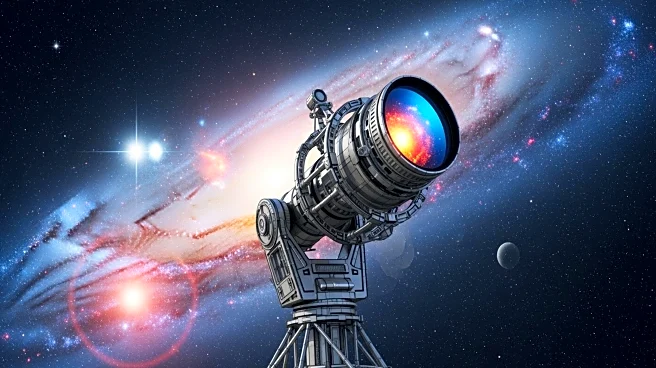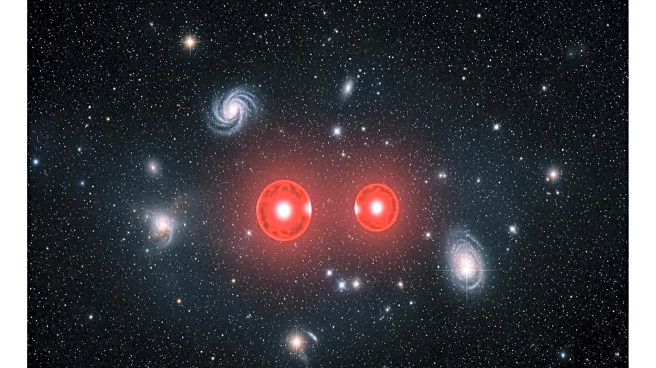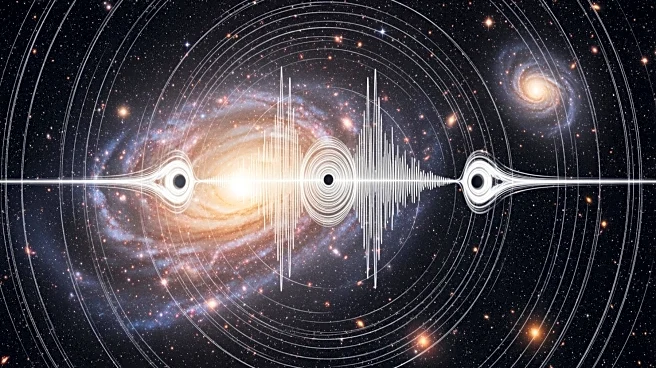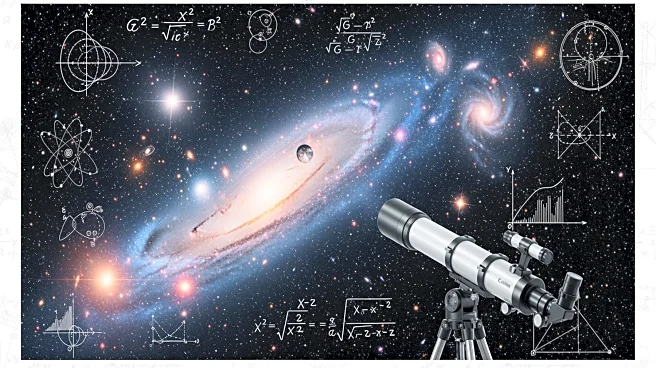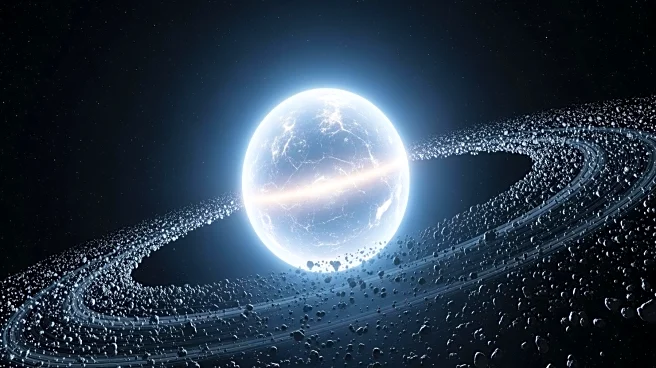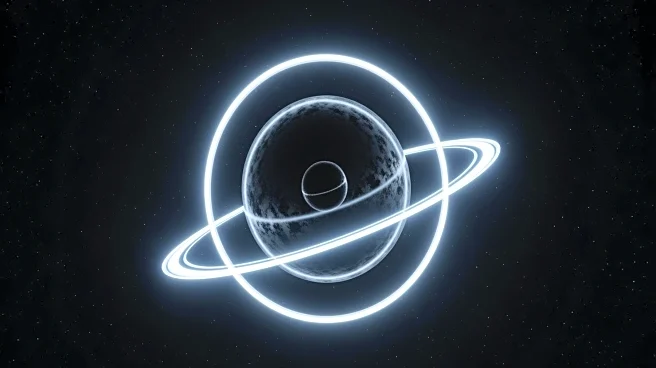What's Happening?
A new study published in Physical Review Research by scientists from Spain and Italy challenges the traditional 'inflation' theory of the universe's early expansion. The researchers propose that gravitational
waves, predicted by general relativity, may have been the driving force behind the universe's formation. This model suggests that these waves could have given rise to galaxies, stars, planets, and life on Earth. The study links this idea to De Sitter space, a mathematical construct named after Dutch mathematician Willem De Sitter, who worked with Albert Einstein in the 1920s. The researchers ran advanced computer simulations to support their theory, which aims to simplify and verify the processes that shaped the cosmos.
Why It's Important?
This new model could significantly impact our understanding of the universe's origins, potentially altering long-standing scientific theories. If gravitational waves are indeed the primary force behind the universe's formation, it could simplify the complex variables involved in the inflation theory. This shift in understanding could influence future research directions in cosmology and physics, focusing on gravity and quantum mechanics as sufficient explanations for cosmic structures. The study's implications extend to the broader scientific community, offering a more verifiable approach to understanding the universe's beginnings.
What's Next?
The study opens avenues for further research into gravitational waves and their role in cosmic formation. Scientists may focus on developing more sensitive instruments to detect these waves, which are faint and require precise technology for observation. The Laser Interferometer Gravitational-Wave Observatory (LIGO) has already made strides in this area, and future advancements could provide more evidence to support the new model. Additionally, the scientific community may explore the implications of De Sitter space in understanding cosmic evolution, potentially leading to new discoveries about the universe's origins.
Beyond the Headlines
The proposal to focus on gravitational waves highlights the intersection of gravity and quantum mechanics in explaining cosmic phenomena. This approach may lead to ethical and philosophical discussions about humanity's place in the universe and our understanding of existence. The study's simplicity and verifiability could inspire a shift in scientific methodologies, emphasizing observable and measurable phenomena over speculative elements. This could foster a more grounded approach to cosmological research, encouraging scientists to explore the universe with renewed curiosity and rigor.
